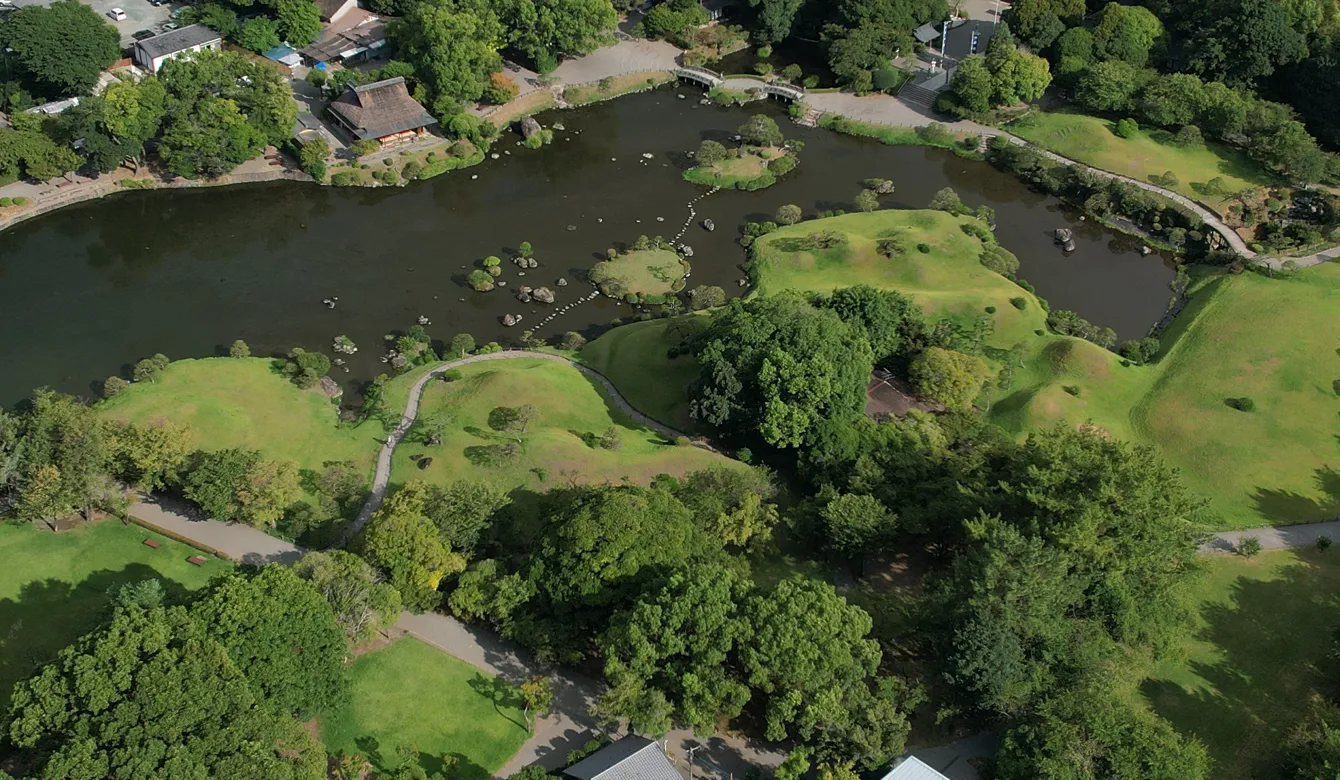
Garden Map
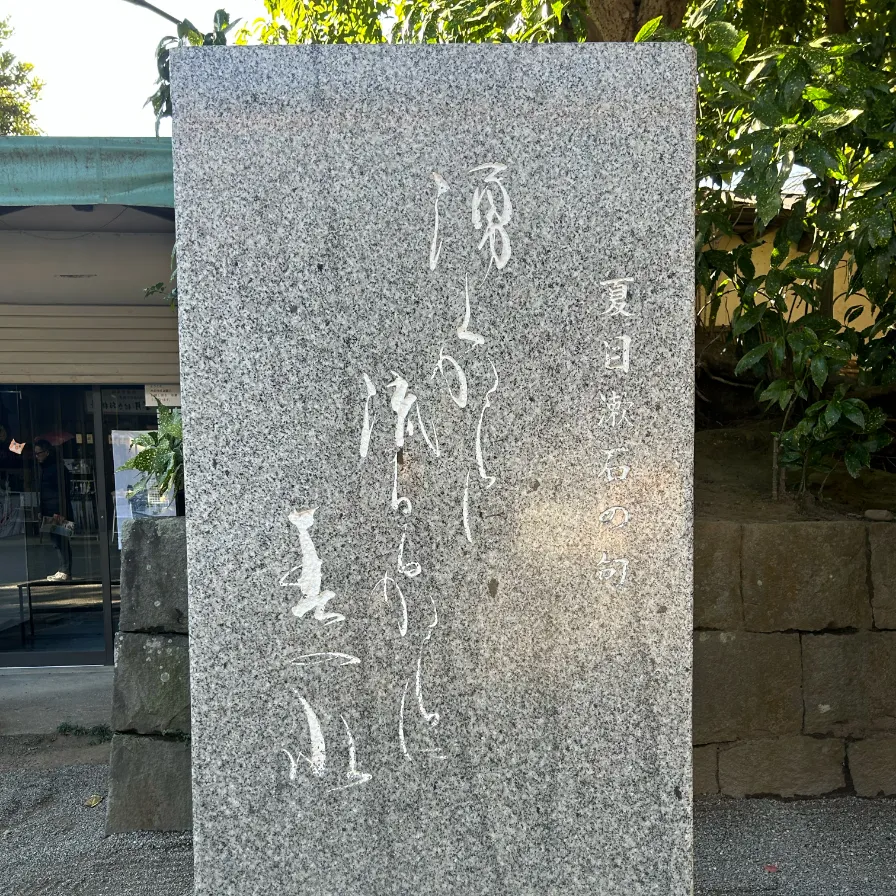


1.Natsume Sōseki Haiku
Monuments
'Gushing up and up / While flowing and streaming out / Water of springtime
Waku kara ni / Nagururu kara ni / Haru no mizu
The pond in Suizenji Jōjuen is fed by spring water which originates in the Aso subsoil. The poet, Natsume Sōseki, creates a sense of the water's movement and rhythm, with the phrase 'water of springtime' (haru no mizu) painting an image of the water glittering in the sunlight.
A great sacred rope / Springtime water gushing forth / At Suizenji
Shimenawa ya / Haru no mizu waku / Suizenji
Sōseki is known to have been a frequent visitor to Suizenji Jōjuen. He highlights the sacred rope (shimenawa) hung in front of Izumi Shrine and the deep impression left on him by the spring water. Sōseki sent this poem to friend and fellow poet Masaoka Shiki, and the words on the monument are taken directly from his own handwriting.
Drumbeats resonate / The Noh theatre trembles / Water of autumn
Tsuzumi utsuya / Nōgakudō no / Aki no mizu
Sōseki was extremely fond of Noh theatre, and would learn and memorise Noh chants in Kumamoto. The poem captures the clear sound of drums resonating amidst the silence.
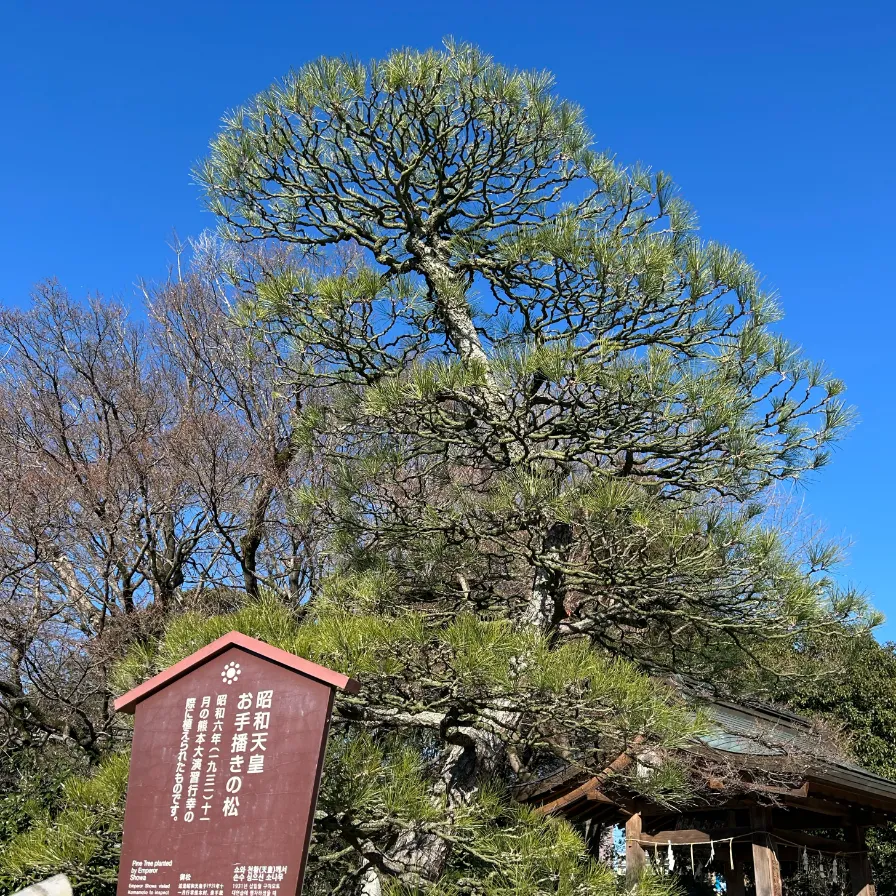
02.Pine Tree Sown
by the Showa Emperor
This tree was planted at the time of the Showa Emperor's visit to Kumamoto in November 1931 during army maneuvers.
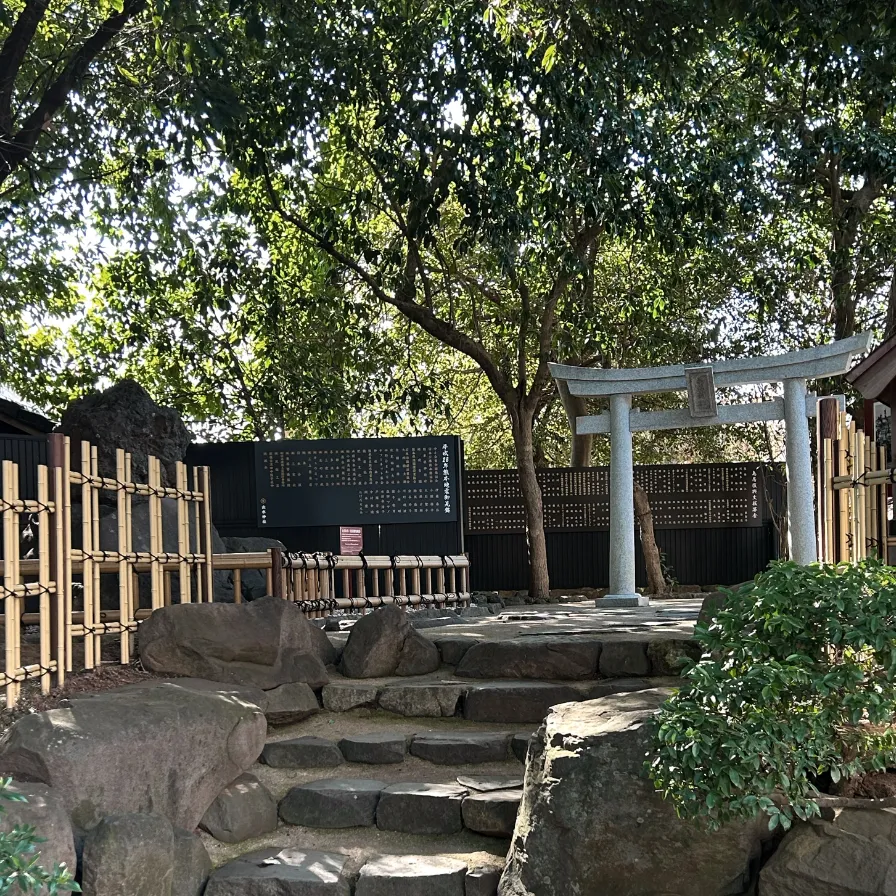
03.Earthquake Restoration
Torii
The large Shinto archway (torii) on the main approach collapsed as a result of the shaking caused by the 2016 Kumamoto earthquakes. Only its two stone pillars remained. The pillars were reengineered to restore the torii in the same shape as the original but smaller, both symbolising a desire to rebuild and preserving the memory of the earthquake.
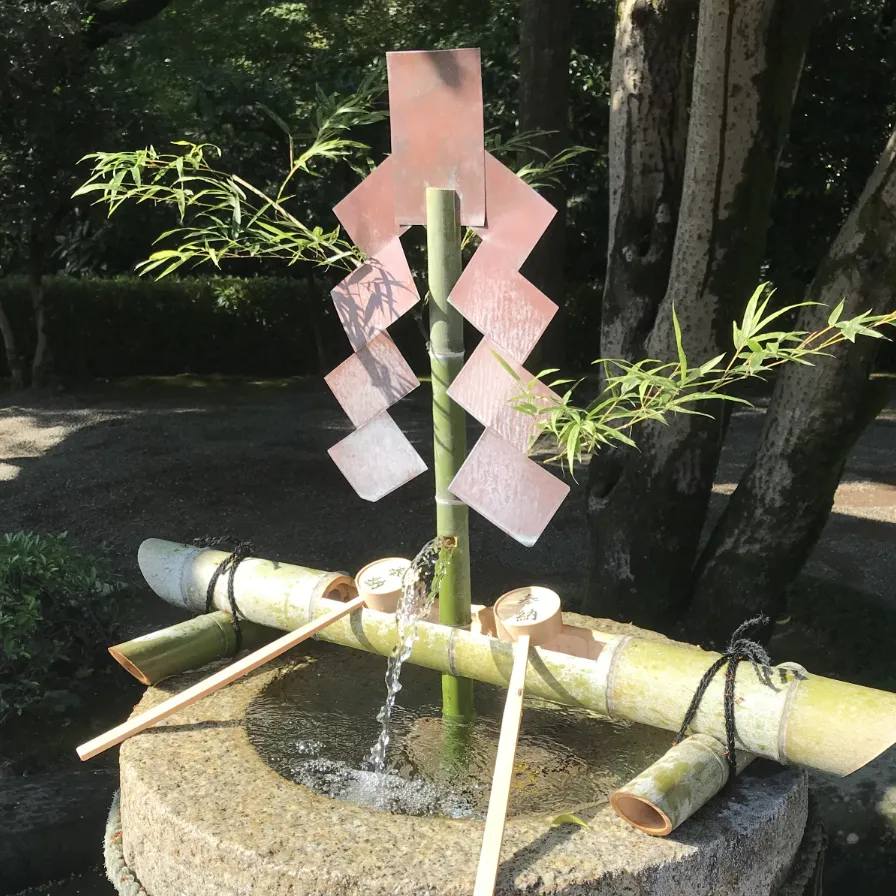
04.Sacred Water of Longevity
The water originates in the subsoil of the Aso volcanic system and has long been known as the 'water of longevity'.
The stone basin into which the water flows was particularly cherished by one of the shrine deities, Lord Hosokawa Tadaoki (Sansai). He named the basin 'Kesa', in reference to its resemblance to the garb worn by buddhist priests.
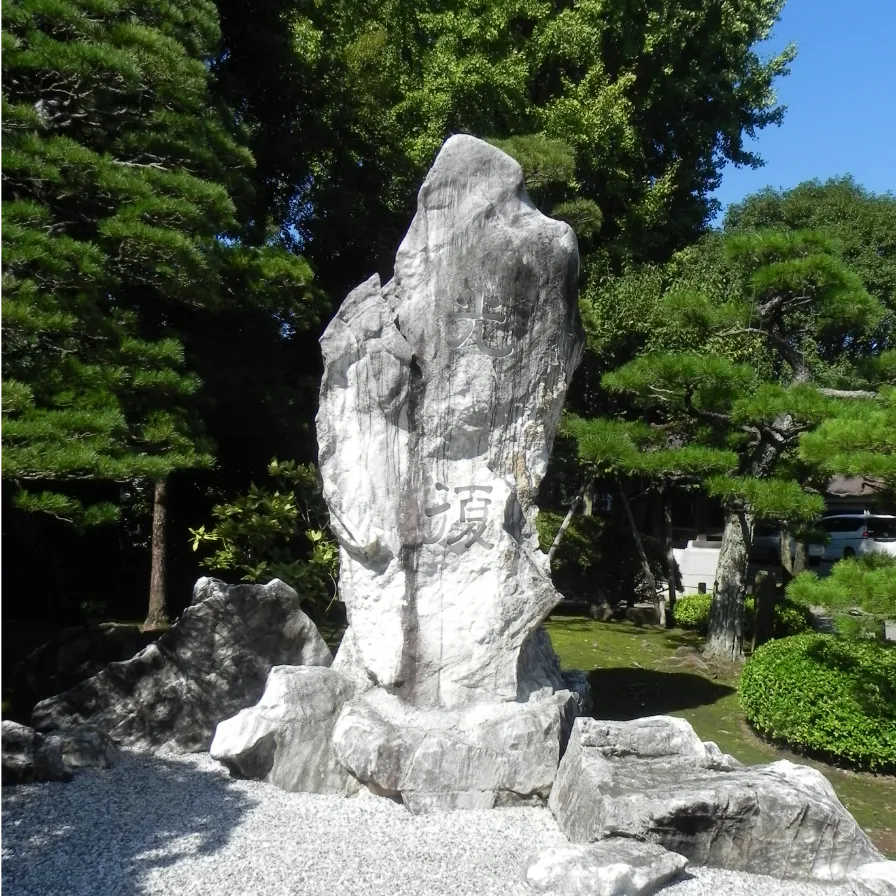
05.Liberation Monument
This monument was erected in 1973 by Hosokawa Morisada, the 17th head of the Higo Hosokawa family. It stands as a memorial to the restoration of the main shrine building, which was destroyed in the war in 1945.
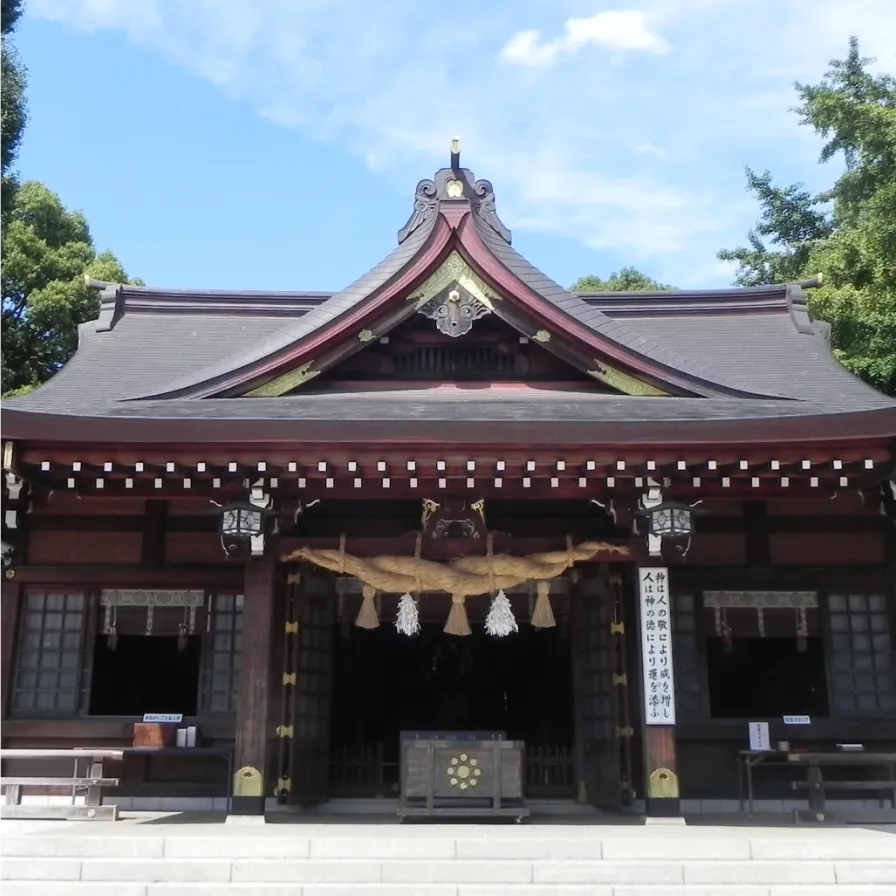
06.Izumi Shrine
In 1877, Kumamoto's town centre was burned to the ground in the Satsuma Rebellion. The old retainers of the Hosokawa family constructed a shrine on the site of Suizenji Jōjuen in 1878, hoping to worship the spirits of their lords, and, through their blessing, to bring peace to the hearts of the people and develop the town.
They enshrined four main deities, including the first head of the Higo Hosokawa family, Lord Hosokawa Fujitaka (Yūsai). The successive generations of Hosokawa daimyo and Lady Gracia (wife of Hosokawa Tadaoki, the second head of the family) were also enshrined, making 15 deities in total. Suizenji Jōjuen is owned and maintained by Izumi Shrine.
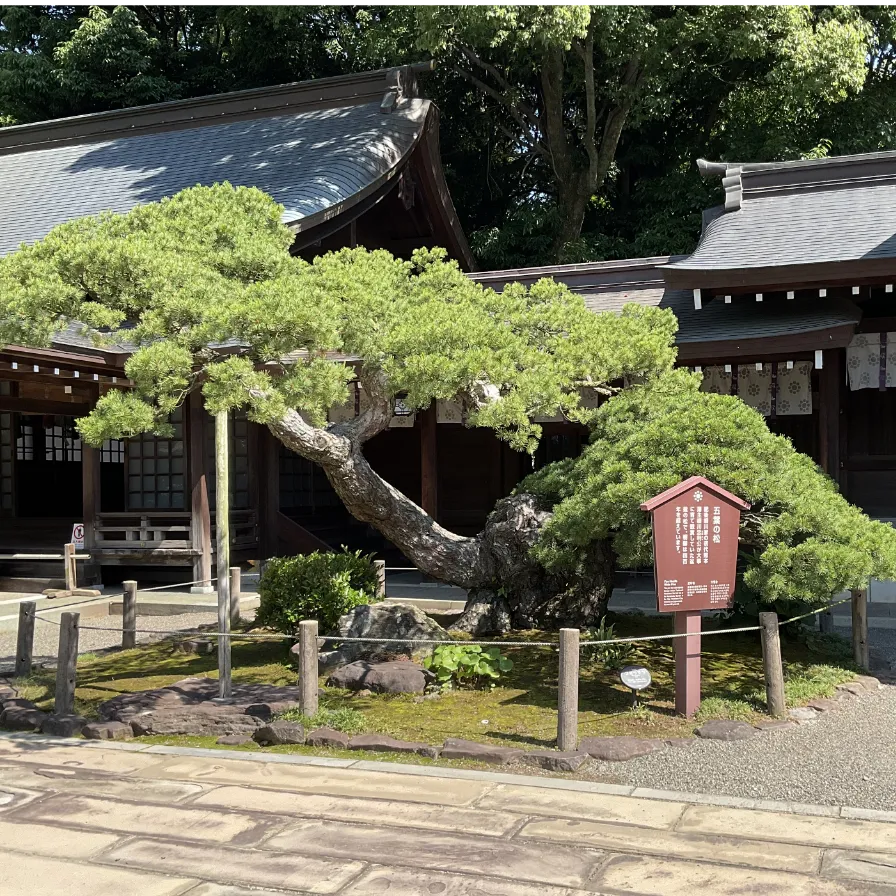
07.Five-Needle Pine Bonsai
This bonsai pine tree was carefully nurtured by Lord Hosokawa Tadatoshi, the first Hosokawa daimyo of the Kumamoto domain.
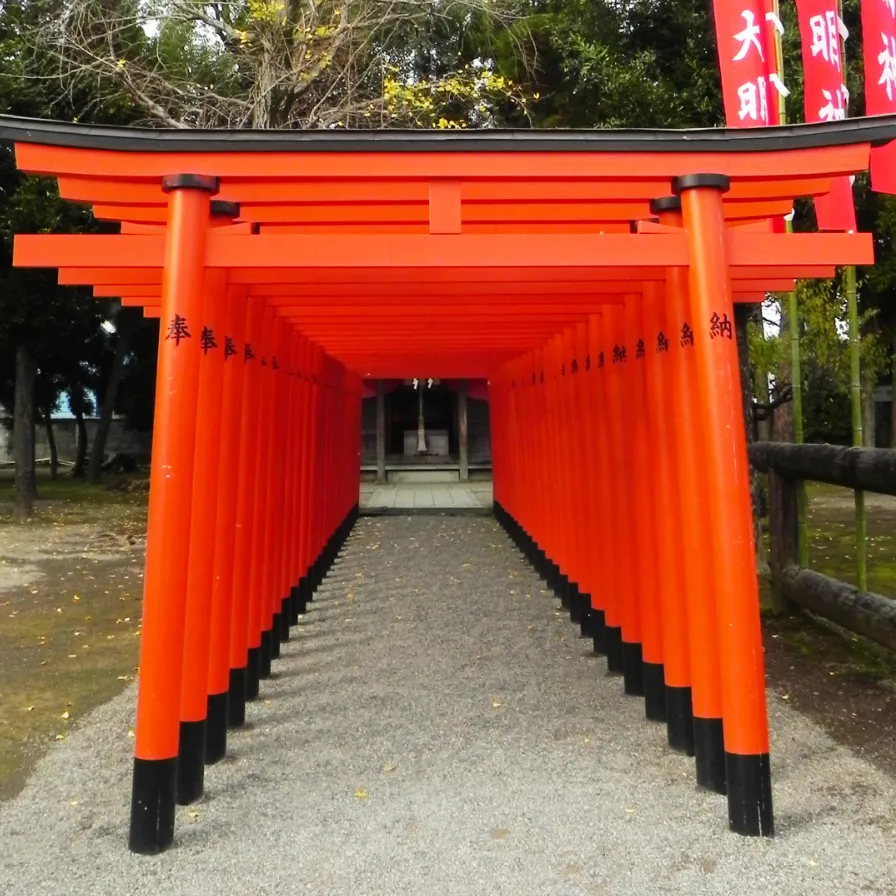
08.Inari Shrine
The spirit of Fushimi Inari Shrine in Kyoto was divided and enshrined here in 1809 by Hosokawa Narishige, the 8th daimyo of the Kumamoto domain. Inari is regarded as a guardian deity, bringing blessings such as abundant harvests, business prosperity, and household and traffic safety.
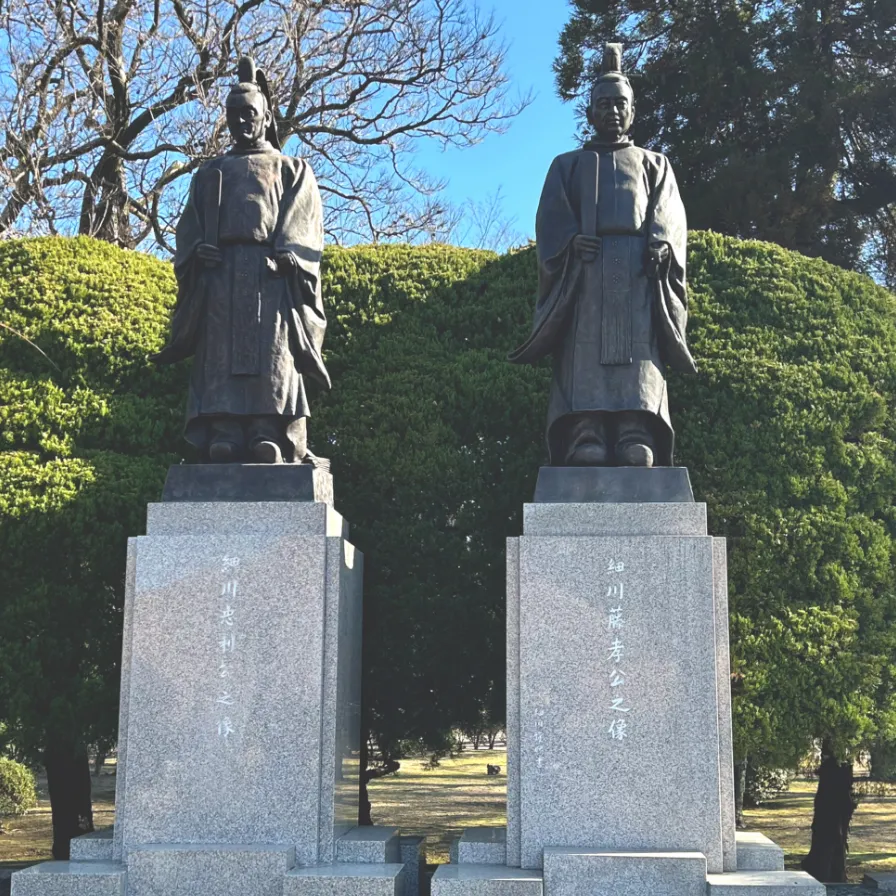
09.Bronze Statues of Hosokawa
Fujitaka and Tadatoshi
Lord Fujitaka (Yūsai) was the first head of the Hosokawa family in the early modern period. He was one of the very few warriors to have served the Muromachi shogunal family, as well as the unifiers Oda Nobunaga, Toyotomi Hideyoshi, and Tokugawa Ieyasu. He was also considered one of the most cultured men of his time, possessing a thorough knowledge of the arts. Notably, he was an inheritor of the esoteric oral tradition known as the Kokin denju.
Lord Tadatoshi was the first daimyo of Kumamoto in the Higo Hosokawa family, and the founder of Suizenji Jōjuen. He invited the renowned swordsman Miyamoto Musashi – who wrote books on martial arts such as the 'Book of Five Rings' – to Kumamoto in 1640.
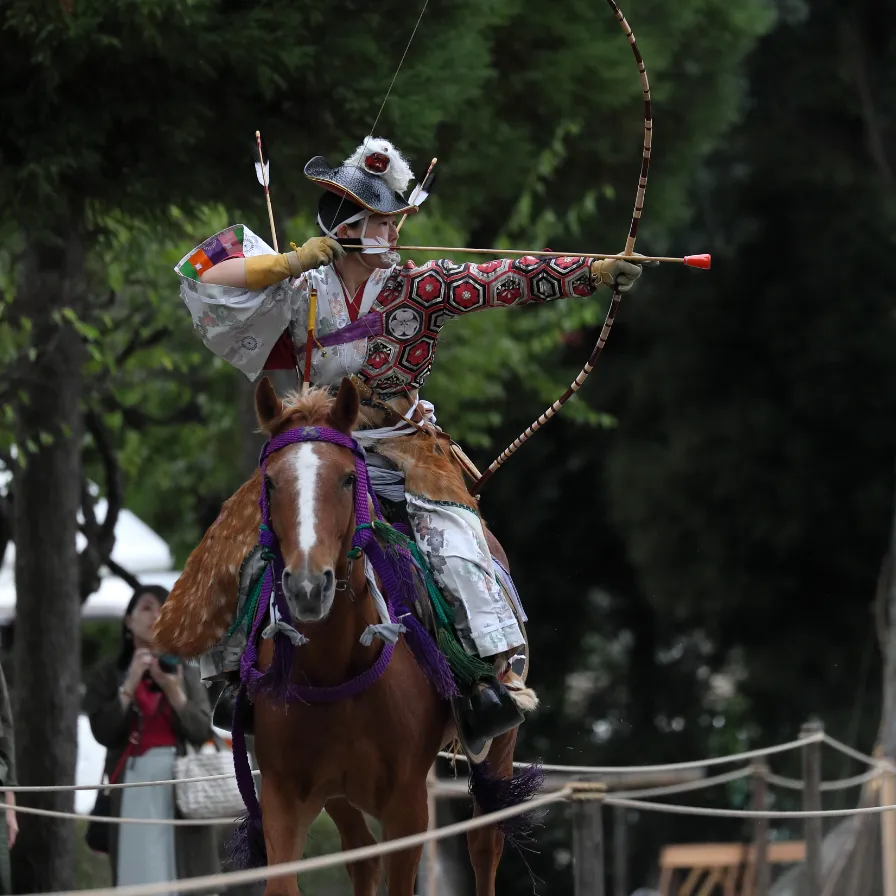
10.Horseback Archery (Yabusame)
Racecourse
Horseback archery (yabusame) is performed as a dedicatory event during the annual spring and autumn festivals. This traditional event is performed by the Takeda School, which is one of the major schools of yabusame and has deep connections to the enshrined deity. Archers in warrior attire sit astride galloping horses while shooting arrows at a target in a valiant display of skill. Three arrows are shot from a distance of approximately 150 metres.
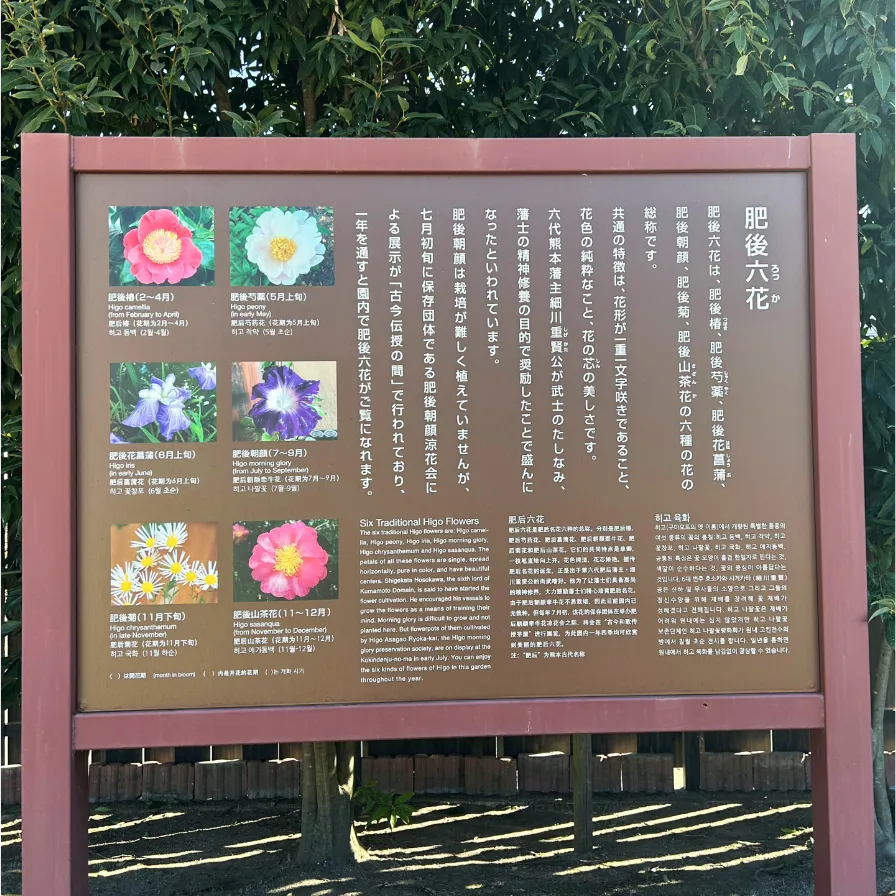
11.Six Flowers of Higo Zone
The six flowers of Higo are the Higo camelia, Higo peony, Higo iris, Higo morning glory, Higo chrysanthemum and Higo sasanqua. The flowers bloom at different times of year, representing the transition from season to season.
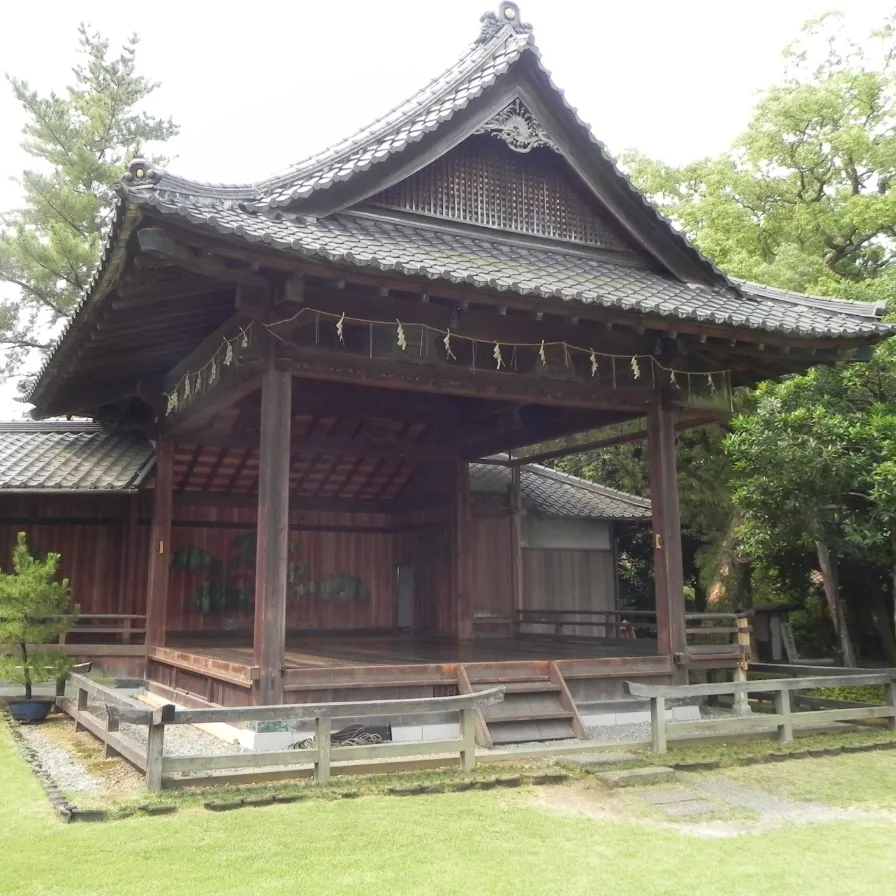
12.Noh Theatre
Even for a daimyo family, the Hosokawa were particularly fond of Noh. It is said that Hosokawa Fujitaka (Yūsai), who excelled in the arts, loved Noh and was a master of taiko drumming. A number of records and Noh performances have been passed down through the family.
The theatre was built together with Izumi Shrine in 1878, but was destroyed by a fire in 1965. The current theatre was owned by the Matsui family, former lords of the Yatsushiro Castle, and was moved to the current site in 1986 to commemorate the 60th anniversary of the Showa Emperor's reign.
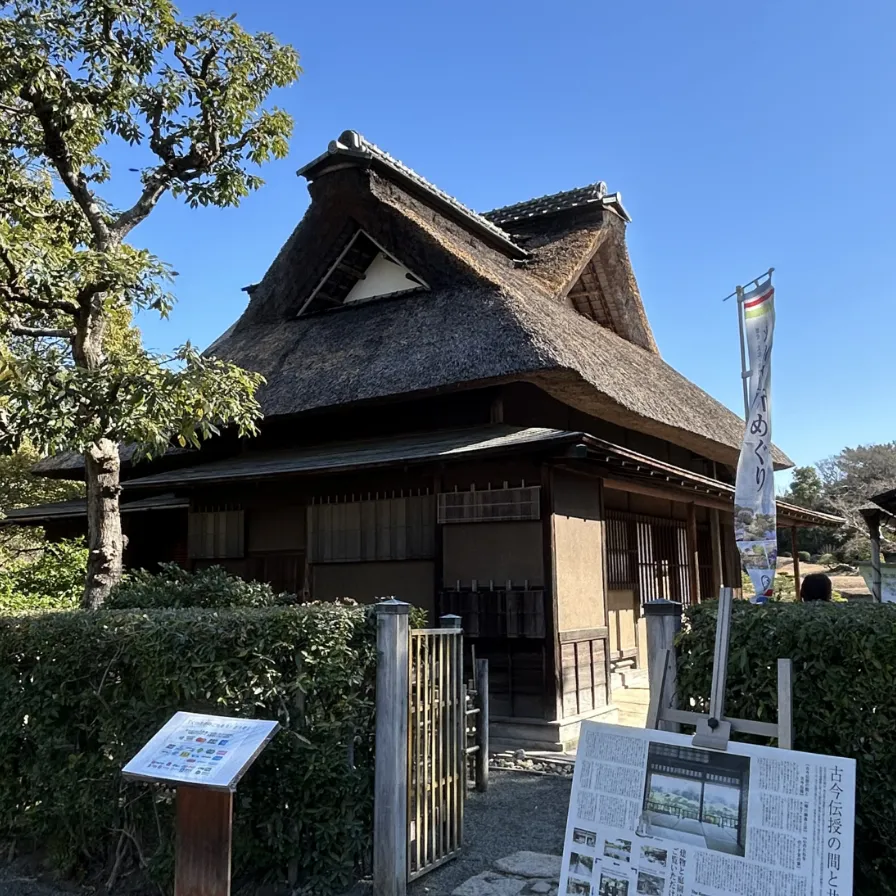
13.Kokin Denju no Ma
The Kokin denju is an oral tradition in which the interpretation of a Heian-period poetry anthology, known as the Kokin wakashū, is passed down from master to pupil. The space where Lord Yūsai passed on the tradition to Prince Hachijō Toshihito is called the Kokin Denju no Ma. It was moved to this location with its deep ties to the Hosokawa family in November of 1912, and was designated an important cultural property by Kumamoto Prefecture in 1964.
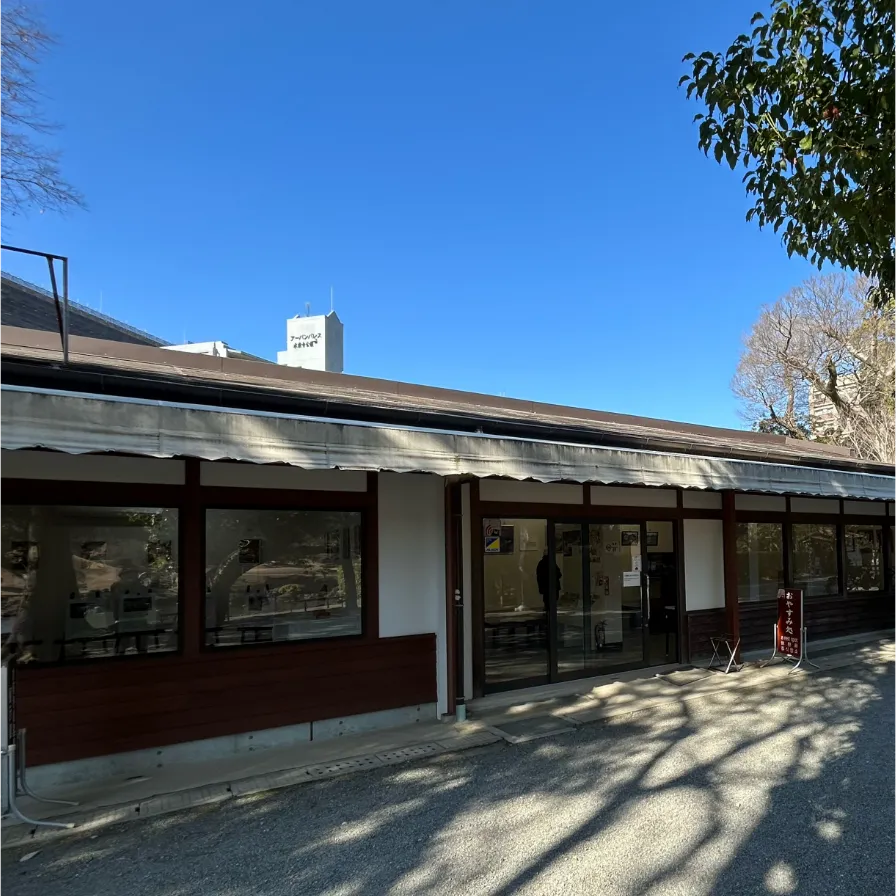
14.Rest Area and Exhibition Hall
An air-conditioned rest area. Exhibits related to the park and the Six Flowers of Higo are displayed here. (Access may be restricted during events).
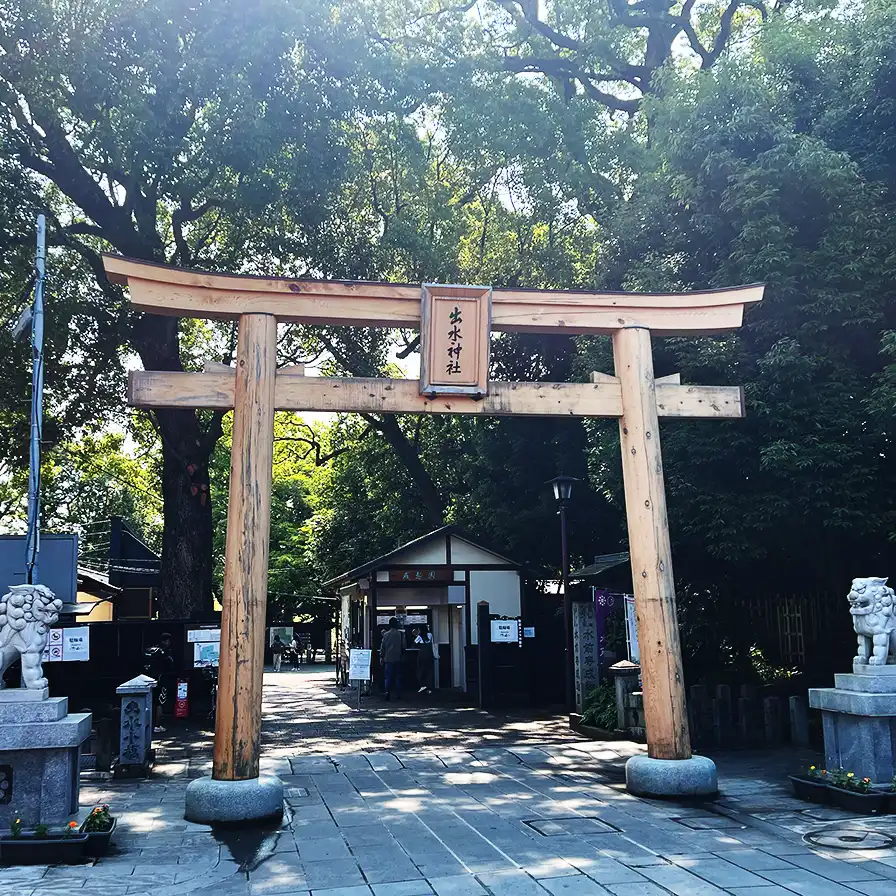
15.Main Gate Entrance
Open from 8:30 to 17:00.
The torii in front of the gate is made from Japanese cyprus that was grown a forest owned by the Shrine.

16.North Gate Entrance
Open from 9:30 to 16:00.
Those wishing to offer prayers may enter by car through the North Gate, accessible from Suizenji Ground Street, and use the designated parking area.

